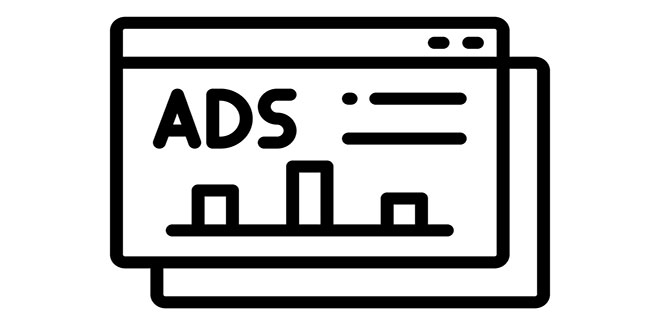
When Bloomberg News announced at the end of last year that it was getting out of the open markets, Rob Janes, Head of Product at AdButler, took note. He thinks publishers should build direct relationships with advertisers.
As someone who values human relationships in advertising, Janes finds that the current state of trading inventory is disturbingly devoid of people. He wants to change that and sees self-service as a path forward. After all, digital technologies have ushered in an era of self-service everything … Why not digital ad sales?
Janes is a veteran in ad tech. Along with his Head of Product role at AdButler, he is a member of the Acceptable Ads Committee and multiple IAB Councils. Recently, he sat down with AdMonsters to talk about the importance of direct relationships between publishers and buyers and how to automate that to scale.
AdMonsters: In a LinkedIn post you said, “Shoo programmatic, I don’t like you.” Are you really anti-programmatic? What turned you off of this industry, darling?
RJ: It’s interesting. I do see some value in programmatic in certain instances. But on the whole, we work with a lot of publishers and see how often they run into discrepancies. A lot can go wrong with programmatic, resolving those issues is time-consuming and costly.
And speaking of costs, I’m not sure what the current numbers are, but at one point it was reported that $.50 out of every dollar paid for inventory was taken by some middle-tech company.
As a result, we see a growing number of publishers saying they want to work with brands and agencies directly. History tends to repeat itself. Ad tech is no different.
AdMonsters: The whole I/O process was intense and highly manual. I remember all the articles that described how many different steps were involved. Do you see that returning?
RJ: I don’t think we’ll go back to those days. There are so many automated ways of processing an I/O now. Additionally, programmatic is a loose term. Programmatic Guaranteed (PG) and Private Marketplaces (PMPs) are technically programmatic, but they’re also direct deals and direct relationships between a publisher and an ad buyer. I wouldn’t group them in the same category as open market programmatic.
PG deals work really, really well, as Bloomberg News proves.
AdMonsters: Is your advice to publishers to eschew the open market programmatic altogether?
RJ: If it’s possible, but it isn’t always possible. Small to mid-sized publishers don’t have sales teams or the threshold to support programmatic direct deals, so open programmatic is their only option to sell advertising.
But if a publisher has a sales team, or the ability to implement a self-service dashboard, I think that’s a better way to go. Everything these days is self-service, from booking a hotel room to ordering food. There’s no reason why buying ads on a website can’t be the same way, even for smaller publishers.
In fact, many companies offer this type of dashboard, allowing advertisers to purchase ads using a credit card. Buyers never need to speak with a human. It’s not an open auction, but it’s still automated.
There’s no getting around programmatic for big publishers because advertisers want to spend their money through a DSP. This is where curated deals come into play.
AdMonsters: What is the advertiser workflow process for the self-service dashboard?
RJ: It varies somewhat from provider to provider. AdButler is an ad server for publishers, and we have a feature that allows publishers to create a dashboard, which in turn lets advertisers sign up, buy inventory directly and pay with a credit card. The buyer uploads the creative, which goes through an approval flow. It also offers a design tool to build a unit that goes live on the site. The benefit is that they never need to talk to somebody on the sales team.
DanAds offers something similar, except that self-service is their entire business model. AdVendio offers it as well.
AdMonsters: That sounds great if a buyer wants to buy advertising on a handful of publications. What if that buyer wants to spend across dozens or even hundreds of sites?
RJ: That’s the downside. With a DSP the buyer indicates how much to spend, and the DSP goes ahead and spends that money across many different sites. With the self-service model, the buyer must indicate how much they want to spend with each site. Unlike the open auction, buyers know exactly which sites their ads are run on. But they also get more bang for their buck working directly with the publisher. For instance, they can get more nuanced targeting.
From my point of view, we’ve taken relationships and networking out of ad tech and replaced them with computers. I personally think relationships can have a bigger payoff, and I think Bloomberg News has proven it. Since they exited the open markets, they’ve seen a 20% in CPMs.
AdMonsters: This sounds exactly like the retail media market.
RJ: Exactly! Something like 25% of all ad revenue will be spent on retail media, and it’s exactly the same premise. The retailer has an audience, and they can monetize it with a little more nuance for the advertiser.
The agency will still play an important role in retail media and self-service buying for the large buyer. The buyers tell their agencies how much they want to spend and the audiences they want to reach, and the agencies can execute those buys via dashboards with publishers or retailers. What’s key is the direct relationship is intact; the agency works directly with the retailer or publisher and knows precisely what they’re getting.
Another topic that’s hot right now is hyper-local media. There are companies in the U.S. that work with a lot of local publications, and they sell to local businesses, such as restaurants and mom-and-pop stores. When consumers visit a local publisher, they want to see ads from businesses in their area, and hyper-local media meets that need.
AdMonsters: A benefit to open programmatic is that it allows advertisers to scale their campaigns quickly. Can self-service scale in the same way?
RJ: In many ways, self-service works just like a DSP. Take Expedia or Rogers Media here in Canada. Unless buyers have big budgets, Rogers will direct them to self-service. The buyers will log in, upload their creatives, select their audience, etc. It’s the same experience as using a DSP, except that the publisher is in control. There are far fewer companies in the middle.
But not every brand is directed to self-service. If you’re a brand with, say a $500K budget, large publishers will assign a sales rep and maintain a hands-on relationship with the buyer. All others, they’ll direct to their self-service model.
AdMonsters: Do you envision a future where large publishers, like CNN or USA Today, sell 100% of their inventory directly, through a combination of direct deals, programmatic guaranteed and PMPs, and the self-service models you advocate?
RJ: Absolutely. Bloomberg News isn’t as big as CNN, but it has proven that it is possible to do away with open market auctions. They’re a great case study.
Cutting out extraneous intermediaries means the publisher keeps a more significant chunk of the CPMs their inventory earns. For advertisers, it means more of their budgets are spent on actual inventory.
AdMonsters: Presumably, the targeting data is more reliable as well.
RJ: Yes, any data is more reliable because the advertiser isn’t relying on a third party to say this user is a mom or in the market for a new mortgage. The data is the publisher’s first-party data, so it will perform better. The results data is also more reliable because the publisher can send log-level details to the buyer or agency to incorporate into whichever business intelligence tool they use.
AdMonsters: So what’s old is new again?
RJ: Exactly. I recently read about a wind-powered cargo ship. It’s high-tech because it uses wind turbines to power it across the ocean. But that’s just a new twist on an old concept of using sails to propel a ship to its destination. Mark my words: that is ad tech.